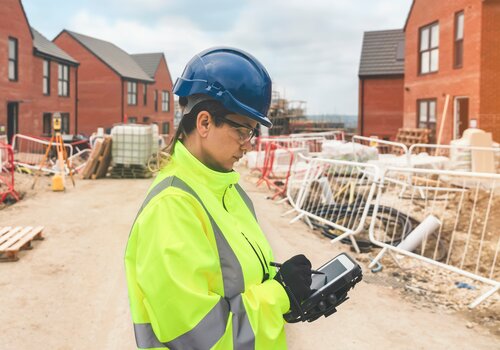Contractors struggle with two things: change...and the way things are.
There are a lot of headaches that are part of the traditional construction model. Technology can take a lot of those headaches away, but technology can also be an even bigger headache.
Some technology companies are in tune with what contractors need and others have proven themselves in the field. Due to their use in personal life, phones and tablets coupled with WiFi technology, for example, have proven themselves extremely popular. And that has opened the doors for improvements in communication, project documentation, project management and other offers for the first time, technologies such as mixed reality.
Technology has the potential to make significant improvements to a contractor’s processes and products. Benefits of the latest construction technologies often include greater efficiency, greater productivity, lower costs and improved quality control.
According to James Benham, CEO of JBKnowledge, the construction industry can’t afford to not adopt technologies. “The construction industry suffers productivity losses of 30 percent. If we had 30 percent productivity losses in the technology industry, we would be out of business,” he says.
Here are the top technologies for construction companies in 2021...
Automation
Automation is everywhere. It is being used for calculations, parts ordering, machine control, and so much more. Automation is just a series of tasks that occur without intervention once the initial action that triggers the sequence has been activated, so it is no wonder that it’s use goes unseen.
However, sometimes automation takes shape in a more conspicuous way, such as an excavator in operation without an operator. Robots are the ultimate expression of automation.
“Robots are ideal for automating mundane, repetitive, or dangerous tasks that are simple and systematic. Tasks that require complex decision making or finesse continue to be more suitable for human workers. The major productivity gains are unlocked by focusing humans on the tasks that only humans can do, while leveraging robots to assist with the basic, repetitive elements,” says Gaurav Kikani, Vice President at Built Robotics.
One popular robot is named Spot. It resembles a dog in appearance and is being used on construction sites to carry equipment and for video capture of the jobsite.
Lifelike robots are not a solution for most contractors, but contractors will be applying more automation.
Reality Capture
Reality capture (project documentation) sometimes begins before any shovels hit the ground. On earthmoving projects, contractors will survey the site to develop an estimate, which will go into the bid to work that job.
You don’t make any money from creating an estimate but that estimate will largely determine how much money you make from completing that project. Creating fast and accurate estimates and takeoffs decreases time spent on activities that are not revenue-driven, produces more accurate quantities and drives efficiencies throughout the construction process.
“Accurate quantities lead to tighter bids, which translates to more success in lining up work, while minimizing risk. This is important for profitability in a hot economy, but critical in a stressed economy where the number of bidders increases,” says Steve Warfle, President, InSite Software. “InSite Elevation offers speedier take-offs, which reduces wages spent bidding; accuracy, which give confidence in aggressive bidding; and documentation, which validates the quantities should any dispute arise.”
More accurate quantities and tighter budgets are extremely beneficial in construction, which too suffers from single-digit net profit margins.
Cameras capable of recording in 360 degrees have significantly decreased in cost and offer high-quality imagery, while drones capture site data of large open spaces and building exteriors.
BIM
Business information modeling (BIM) has become an increasingly important part of the construction process. A BIM model contains all the information a contractor needs to turn a construction site from what it is to what the owner wants it to be.
BIM greatly aids the architect and the project manager. Making changes to a BIM model is often easier and less time consuming than changing a physical blueprint or a physical 3D model. Communicating changes to a BIM model (email/text) is much easier and faster than communicating changes made to a blueprint (which get hand-delivered).
Mistakes are greatly reduced when using BIM, especially 3D models. Conflicts in the design, such as placing electrical and plumbing behind the same section of wall, are more likely to be found in a digital model versus a blueprint.
Conflicts and other design errors that are not resolved in the planning stage, are discovered in the field. At that point, resolving the issue can be costly, since work usually needs to stop and there are more people, as well as equipment, in play so your cost per hour is significantly increased.
Plus, this is likely to delay schedules, which can cause even more work and delays, which is likely eating at profit margins.
You can add a fourth dimension to your 3D model—time. This 4D model shows the development of the construction project over time and allows contractors to compare the progress of the project with the 4D model to determine if they are on schedule and make any adjustments if actual progress is not in sync with projected progress.
Subscribe to the CONEXPO-CON/AGG 365 weekly newsletter to get more great insights like this.












